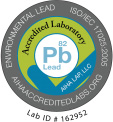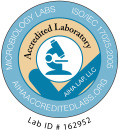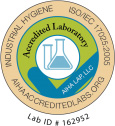Short Business Description
The members of the genus Acidovorax have all been previously classified as Pseudomonas species. Although some are suspected to be opportunistic pathogens capable of causing urinary tract and wound infections as well as septicemia, the actual incidence of such disease is poorly documented.
Name
Short Business Description
Acinetobacter baumannii is a gram-negative, oxidase-negative bacillus that is often resistant to Penicillin. It is usually found in moist environments and can indicate a water or sewage leak, but it is also widely distributed in soil. It can cause a range of diseases from pneumonia and urinary tract infections to meningitis, but it is normally considered an opportunistic pathogen.
Short Business Description
Acinetobacter species are common environmental bacteria. They are non-fermenting, oxidase-negative, strictly aerobic bacteria and can be isolated from soil, water, and the skin of approximately 25% of the population. They are considered opportunistic pathogens and will often cause nosocomial infections and supra-infection. Acinetobacter species can cause pneumonia in hospitalized patients and will readily cause skin infections when already open wounds come into contact with soil.
Name
Name
Short Business Description
Found in freshwater, chlorinated water, brackish water, and sewage. It is known as a pathogen to aquatic organisms and has caused infections in humans with open wounds.
Name
Short Business Description
This is a Gram negative bacteria associated with fresh and aquatic environments. There are 14 species, some of which have been identified as potential human pathogens. One of the most notable species is A. hydrophila which has been linked to diseases in fish as well.
Name
Short Business Description
Occurs in soil and water. Common inhabitant of the intestinal tract of vertibrates. Occasional opportunistic pathogen of humans.
Name
Short Business Description
Occurs in soil and water. Occasional opportunistic pathogen of humans.
Short Business Description
Occurs in soil and water. Occasional opportunistic pathogen of humans.
Name
Name
Name
Name
Short Business Description
Bacillus circulans is a flagellated, gram-positive, aerobic rod. Like others in its genus, it is a common contaminant of laboratory samples and is ubiquitous in the environment, especially in soil. A few rare cases of human infection have been documented, but the organism should be considered non-pathogenic. It is used heavily for the industrial generation of L-glutamic acid.
Name
Name
Name
Short Business Description
A novel species of the Genus Bacillus
Name
Short Business Description
This genus of bacteria is ubiquitous in nature being found in soil, dust, water, plants, humans and animals. The majority of Bacillus species are nonpathogenic or opportunistic pathogens for humans. Exceptions are Bacillus anthracis, the cause of anthrax, and Bacillus cereus as an agent of food poisoning. Several species are plant and insect pathogens
Short Business Description
Member of the Genus Bacillus. Used in commmercial insecticides for the control of crop-destroying and disease carrying insects
Name
Short Business Description
This organism is closely related to Bacteroides fragilis and is commonly isolated from feces and other clinical samples.
Name
Name
Short Business Description
Members of the genus Brevibacterium are are tiny, gram-positive, coryneform bacilli. They test positive for Catalase and negative for Oxidase. Despite being generally considered skin flora, Brevibacterium casei is a known opportunistic pathogen. It is the most frequently isolated species in the genus and has been known to cause sepsis, especially in cases where a catheter is present.
Short Business Description
Brevibacterium are a genus of gram-positive bacilli commonly isolated from soil. They are generally considered to be commensal skin flora, and a few species have industrial uses in the production of cheeses.
Short Business Description
Brevibacterium are a genus of gram-positive bacilli commonly isolated from soil. They are generally considered to be commensal skin flora, and a few species have industrial uses in the production of cheeses.
Short Business Description
Brevundimonas diminuta is an aerobic, non-lactose-fermenting, gram-negative rod previously classified as Pseudomonas diminuta. It is a common organism in the soil and other moist environments, but it is not as commonly isolated from water as other members of its genus. It is generally considered non-pathogenic.
Short Business Description
A Gram negative non-fermenting rod isolated from the environment and clinical samples.
Name
Short Business Description
Burkholderia cepacia, formerly classified as Pseudomonas cepacia, is an obligately aerobic, motile, gram-negative rod. It is common in both soil and groundwater worldwide, and is capable of utilizing PCBs as a food source in the environment. B. cepacia is most often associated with chronic lung infections of cystic fibrosis patients and with pneumonia in the immunocompromised.
Name
Name
Short Business Description
Members of the genus Chromobacterium are short, gram-negative bacilli that are motile by means of one or more flagella. Some species produce brilliant violet-colored colonies on culture media. The distribution in nature is quite wide-spread, and the bacteria are easily recovered from both soil and water. No specific diseases are caused by these organisms, but they are capable of causing severe skin and wound infections as well as septicemia.
Short Business Description
A gram negative rod associated with water environments. It has been known to cause septicemia, meningitis, and wound infections in humans.
Short Business Description
Member of the Enterobacteriaceae family. It is found in the feces of humans and animals and can be an opportunistic pathogen.
Name
Short Business Description
Member of the Enterobacteriaceae family. It is found in the feces of humans and animals and can be an opportunistic pathogen. When present in the environment they are usually in the form of fecal contaminants.
Name
Short Business Description
Citrobacter koseri (formerly C. diversus) can be isolated from water, sewage, soils, and food, as well as from the feces of man and other animals, where they may be considered normal flora.
Name
Short Business Description
Member of the Enterobacteriaceae family. It is found in the feces of humans and animals and can be an opportunistic pathogen.
Short Business Description
Clavibacter is a genus containing organisms responsible for causing tomato ring rot.
Name
Short Business Description
This organism is a recently re-named species that was formerly known as Pseudomonas acidovorans. It is commonly isolated from soil, water, and hospital environments.
Short Business Description
This organism has been isolated from both water and hospital environments. It has been reported on clinical isolates.
Short Business Description
Genus of Gram-positive irregular bacilli that can be isolated from the skin or mucous membranes of humans.
Name
Short Business Description
Widely distributed in nature, occurring in fresh water, soil and sewage. Considered an opportunistic pathogen.
Short Business Description
Widely distributed in nature, occuring in fresh water, soil, and sewage. Opportunistic pathogen of humans.
Name
Short Business Description
Widely distributed in nature, occuring in fresh water, soil, and sewage. Opportunistic pathogen of humans.
Short Business Description
Members of the genus Enterobacter are gram-negative, lactose-fermenting bacilli. They are opportunistic pathogens once outside of their normal intestinal environment. Human infection generally follows the fecal-oral route, although other routes are also possible. Enterobacter is a leading cause of nosocomial infections, especially urinary tract infections and peritonitis. As fecal coliforms, their presence can indicate wastewater contamination.
Short Business Description
Members of the genus Enterobacter are gram-negative, lactose-fermenting bacilli. They are opportunistic pathogens once outside of their normal intestinal environment. Human infection generally follows the fecal-oral route, although other routes are also possible. Enterobacter is a leading cause of nosocomial infections, especially urinary tract infections and peritonitis. As fecal coliforms, their presence can indicate wastewater contamination.
Name
Short Business Description
Members of the genus Enterobacter are gram-negative, lactose-fermenting bacilli. They are opportunistic pathogens once outside of their normal intestinal environment. Human infection generally follows the fecal-oral route, although other routes are also possible. Enterobacter is a leading cause of nosocomial infections, especially urinary tract infections and peritonitis. As fecal coliforms, their presence can indicate wastewater contamination.
Short Business Description
Members of the genus Enterobacter are gram-negative, lactose-fermenting bacilli. They are opportunistic pathogens once outside of their normal intestinal environment. Human infection generally follows the fecal-oral route, although other routes are also possible. Enterobacter is a leading cause of nosocomial infections, especially urinary tract infections and peritonitis. As fecal coliforms, their presence can indicate wastewater contamination.
Name
Short Business Description
Group D enterococcus. CDC group I. Normal habitat is the gastrointestinal tract.
Short Business Description
Enterococcus faecalis is a Gram-positive, commensal bacterium inhabiting the gastrointestinal tracts of humans and other mammals. It is formerly known as Group D Streptococcus.
Name
Name
Name
Short Business Description
This result indicates that gram-negative rods that ferment lactose were found on culture. This group contains a wide variety of genera including Citrobacter, Enterobacter, Escherichia, and Klebsiella. Many of these organisms cause a wide variety of diseases and infections, and several can be considered true pathogens.
Name
Short Business Description
This result indicates that a gram-negative organism that does not ferment lactose was found on culture. This is a very broad group of organisms that includes the genera Pseudomonas, Aeromonas, Flavomonas, Flavobacterium, Alkaligenes, and Acinetobacter, as well as many others. The degree of pathogenicity that they possess ranges from non-existent to opportunistic pathogens, but there are very few true pathogens in the group.
Name
Name
Short Business Description
Member of the Enterobacteriaceae family. It is found in the feces of humans and animals and can be an opportunistic pathogen.
Name
Name
Name
Short Business Description
Eubacterium is a genus of obligately anaerobic gram-positive rod isolated primarily from human feces. Eubacterium limosum is the type species for the genus.
Name
Name
Short Business Description
Widely distributed in soil and water. Isolated from human clinical specimens. Clinical significance is uncertain. Previously designated as CDC group IIb. Includes strains designated Flav. indologenes and Flav. gleum. Yellow pigment often produced.
Short Business Description
Widely distributed in soil and water, also found in raw meats, milk and other foods. Common in hospital environments and may cause nosocomial infections.
Short Business Description
Widely distributed in soil and water, also found in raw meats, milk and other foods. Common in hospital environments and may cause nosocomial infections.
Short Business Description
Widely distributed in soil and water, also found in raw meats, milk and other foods. Common in hospital environments and may cause nosocomial infections.
Short Business Description
Fusobacterium is a Gram-negative non-sporeforming bacterium that is widely known and studied as a human and animal pathogen. Fusobacterium's exceptional ability to adhere with both Gram-negative and Gram-positive plaque microorganisms in biofilms (specifically in soft tissue) has made it a highly invasive pathogen.
Name
Name
Short Business Description
The genus Hydrogenophaga is a newly-created grouping of gram-negative bacteria that had been previously classified as species of the genus Pseudomonas. These organisms are chemolithotrophic, requiring only minimal minerals for growth. As such, they are commonly isolated from wastewater streams and other industrial water sources. They should be considered non-pathogenic.
Short Business Description
Kingella denitrificans is a member of the genus Kingella, a group of Oxidase-positive, non-motile, gram-negative rods. It is generally considered normal oral flora, though it can also be an opportunistic pathogen. [CDC]
Name
Short Business Description
Klebsiella species are Gram negative bacteria considered to be opportunistic pathogens. They have been isolated from the environment and in mammalian mucosal surfaces.
Short Business Description
Klebsiella pneumoniae is one of the most common Gram-negative bacteria seen worldwide and is generally regarded as normal human flora. On most samples it should be considered a sign of fecal contamination. This organism can be an opportunistic pathogen.
Name
Short Business Description
Klebsiella are non-motile, rod-shaped, aerobic bacteria that possess a prominent polysaccharide capsule. The members of this genus are ubiquitous in the environment and can be considered normal flora in humans.
Name
Name
Name
Short Business Description
Formerly classified as Micrococcus sedintarius. Generally considered saprophytic and normal inhabitants of the skin and mucosa. Occasional agent of endocarditisand pitted karatolyisis.
Short Business Description
Leclercia adecarboxylata was originally named Escherichia adecarboxylata. It is a motile, gram-negative bacillus of the Enterobacteriaceae family.
Name
Short Business Description
A species of Legionella that has been implicated in cases of Pontiac Fever and pneumonia. It is also a precurser for the potential growth of Legionella pneumophila because of environmental growth characteristics and similarities between the species.
Name
Name
Name
Short Business Description
Legionella nautarum is a recently recognized species of the genus (first recognized in 1993). It is serologically un-related to other members of the genus Legionella. Legionella nautarum is one of the few species of Legionella bacteria that is always non-motile. There is scant data available on the pathogenicity of this organism.
Short Business Description
L. pneumophila is the etiologic agent of Legionnaire's Disease, a type of pneumonia that was first widely recognized in 1976 following an outbreak in Philadelphia. Legionella pneumophila is a free-living, gram-negative bacilli that is generally motile, possessing from one to three polar flagella. It is ubiquitous in aquatic environments, but can be found outside of lakes and streams. Additionly, the bacteria can be found in cooling towers, air conditioners, spa equipment, fountains, humidifiers, and potable water systems. They grow in a range of temperatures from 5 to 63 degrees Celsius, with optimal growth in the range of 25 to 40 degrees. Legionella often forms a parasitic relationship with amoebae in its environment. The bacteria is able to resist destruction by the protozoan, and so is provided protection from a variety of biocidal treatments and other harsh environmental conditions. As the bacteria multiplies, it eventually kills the host cells and moves back into the environment. Humans become accidental hosts when contaminated water is inhaled, be it through exhaust from a cooling tower or the mist in a shower. There are at least 14 known serological groups of L. pneumophila, but serogroup 1 is the most prevalent and is considered to be the most pathological.
Name
Name
Short Business Description
Isolated from water and hopsital environment. Has been reported in clinical cases. Previously classified as Corynebacterium aquaticum.
Short Business Description
Methylobacterium dichloromethanicum is a species originally isolated from the soil at a treatment plant that dealt with halogenated hydrocarbons. The organism is pollution-resistant and is capable of digesting several different types of halo-organic compounds. It is not known to be pathogenic at this time.
Short Business Description
Isolated from a wide range of samples such as soil, water, air, rice grain, sewage and hospital environments, but primarily from leaf surfaces of plants. Some species are occasionally isolated from clinical specimens. Rarely clinically significant, Methylobacterium species have been implicated in an outbreak of nosocomial infections.
Short Business Description
Newly described genus consisting of yellow or orange pigmented motile rods previously designated as CDC A4 and A5. Pathogenic potential is uncertain. Rarely encountered in clinical specimens.
Short Business Description
Microbacterium are a genus of coryneform bacteria consisting of small diphtheroid, gram-positive, rod-shaped organisms. The members of the genus were previously identified as Aureobacterium. Although not normally pathogenic, they can cause endophthalmitis, urinary tract infections, endocarditis, soft tissue infections, hypersensitivity pneumonitis, and meningitis. They are commonly found in dairy products and are characterized by marked resistance to heat.
Name
Short Business Description
Members of the genus Micrococcus are generally considered skin flora, although they are opportunistic pathogens. They are gram-positive cocci that test Catalase-positive. It is easy to differentiate them from Staphylococcus species, however, as Micrococcus species form bright yellow colonies on tryptic soy agar supplemented with 5% sheep blood.
Name
Short Business Description
Members of the genus Micrococcus are generally considered skin flora, although they are opportunistic pathogens. They are gram-positive cocci that test Catalase-positive. It is easy to differentiate them from Staphylococcus species, however, as Micrococcus species form bright yellow colonies on tryptic soy agar supplemented with 5% sheep blood.
Name
Name
Short Business Description
Isolated from the respiratory tract where it is a common part of the flora. Rarely clinically significant.
Name
Short Business Description
This genus of bacteria if part of the normal flora of the upper respiratory tract and urinary tract of humans and animals. It rarely causes disease in humans.
Name
Name
Name
Name
Name
Short Business Description
This bacteria has been isolated from soil and decaying plant materials. It has also been found in some clinical samples.
Name
Short Business Description
A Gram negative rod previously named Moraxella urethralis. Reported infections have been associated with urinary catheters.
Name
Short Business Description
Member of the genus Paenibacillus, which have been split off from the genus Bacillus recently. Paenibacillus alvei is motile gram positive rod and grows extremely rapidly on culture media.
Short Business Description
Members of the genus Paenibacillus have recently been split off from the genus Bacillus and are motile, gram-positive rods. They can be easily distinguished on culture media due to their characterisitic growth patterns which form vortex-like or circular colonies of varying sizes.Paenibacillus grows extremely rapidly on culture media, and will overgrow an entire plate in 24 hours from a single point of inoculation. Therefore an exact count is almost impossible to determine.
Name
Short Business Description
Pantoea agglomerans can be found in plants and in human and animal feces. Erwinia milletiae and Enterobacter agglomerans are synonyms for Pantoea agglomerans.
Short Business Description
Vancomycin resistant. Morphologically resembles streptococci. Associated with milk and dairy products. Rarely isolated from human clinical specimens.
Name
Name
Name
Name
Short Business Description
Prevotella strains are Gram-negative, non-motile, rod-shaped, singular cells that thrive in anaerobic growth conditions. They are known for being host-associated, colonizing the human mouth.
Name
Short Business Description
Can be found in the intestines of humans and other mammals, manure, polluted water, and soil. Can be an opportunistic pathogen.
Name
Short Business Description
Can be found in the intestines of humans and other mammals, manure, polluted water, and soil. Can be an opportunistic pathogen.
Name
Short Business Description
Diverse and widely distributed in the environment. Has been isolated from clinical specimens, associated with nosocomial infections. It is also a predominant slime former and denitrifying bacteria in drinking water distribution systems.
Short Business Description
Pseudomonas fluorescens encompasses a group of common, nonpathogenic saprophytes that colonize soil, water and plant surface environments. It produces a soluble, greenish fluorescent pigment, particularly under conditions of low iron availability. It is motile by means of multiple polar flagella. P. fluorescens has simple nutritional requirements.
Name
Short Business Description
Pseudomonas are widely distributed in the environment and are especially prone to inhabit moist areas. They are also a member of the normal flora of the intestinal tract of humans. It is associated with a variety of infections and is a major cause of nosocomial infections in the hospital environment.
Short Business Description
(Flavimonas oryyzihabitans) . Is widely distributed in both nature and the hospital environment. It has been associated with nosocomial (hospital-acquired) infections.
Short Business Description
These gram-negative bacilli are widely found in nature. They are especially prevalent in hot tubs and swimming pools due to the fluctuations in temperature and improper sanitation procedures. Some species such as P. aeruginosa and P. flourescens can be opportunistic pathogens to plants, humans, and animals. Disease states may range from mild skin infection and swimmer’s ear to corneal ulceration and vision loss due to microbial keratitis.
Name
Short Business Description
Pseudomonas are widely distributed in the environment and are especially prone to inhabit moist areas. They are also a member of the normal flora of the intestinal tract of humans. It is associated with a variety of infections and is a major cause of nosocomial infections in the hospital environment.
Name
Short Business Description
Pseudomonas are widely distributed in the environment and are especially prone to inhabit moist areas. They are also a member of the normal flora of the intestinal tract of humans. It is associated with a variety of infections and is a major cause of nosocomial infections in the hospital environment.
Name
Short Business Description
A member of the family Enterbacteriaceae. Isolated from environmental samples, especially water samples, and rarely isolated from clinical samples.
Name
Short Business Description
Has been isolated from both clinical and environmental sources, primarily water. It may rarely be an opportunistic pathogen.
Name
Short Business Description
This bacteria has a wide distribution, but has had significant isolation from soil samples. The genus Rhodococcus is known as a potential animal pathogen but there have also been some cases of human infection.
Name
Name
Short Business Description
Roseomonas species are members of a genus of non-fermenting, gram-negative rods. These organisms will grow at room temperature, although they grow best at body temperature. They are opportunistic pathogens in humans that often cause wound and urinary tract infections, but they can also cause bacteremia.
Name
Name
Name
Short Business Description
This is a Gram negative bacteria in the family Enterobacteriaceae. Serratia species have been isolated from clinical samples but have also been isolated from several environmental specimens such as soil, plates, and water.
Name
Name
Name
Short Business Description
Sphingomonas paucimobilis is a gram-negative, rod-shaped, aerobic bacteria. It typically produces yellow-pigmented colonies. It is widely distributed in nature, having been isolated from many different land and water habitats, as well as from plant root systems, clinical specimens, and other sources. It is known as a common component of soap scum.
Name
Short Business Description
Normal flora of the skin and mucous membranes. Can also be isolated from dust, water, and food products. Several species are considered as opportunistic pathogens to humans and animals.
Short Business Description
Normal flora of the skin and mucous membranes. Can also be isolated from dust, water, and food products. Several species are considered as opportunistic pathogens to humans and animals.
Short Business Description
Stenotrophomonas maltophilia is a gram negative bacteria which may cause uncommon but difficult to treat infections in humans. It is commonly found in aqueous environments , in soil, and on plants. It is also a frequent colonizer of the respiratory system of humans and in indwelling catheters.
Name
Name
Name
Short Business Description
Sulfate reducing bacteria include several of groups of bacteria that use sulfate in water as an oxidizing agent, reducing it to sulfide.
Name
Name
Short Business Description
This bacteria is part of the Vibrionaceae family. The most commonly isolated pathogens from this family are V. cholerae (causative agent of cholera), V. parahaemolyticus (causes food poisoning), and V. vulnificus (causes septicemia). Many of the Vibrio species are associated with aquatic or fresh water systems. Some reported cases of human acquired infection from Vibrio damsela have involved patients handling aquatic organisms with an open wound. V. damsela is also a reported pathogen in some aquatic organisms.
Name
Name
Short Business Description
Isolated from the environment and animal sources. Occasionally isolated from clinical specimens.












